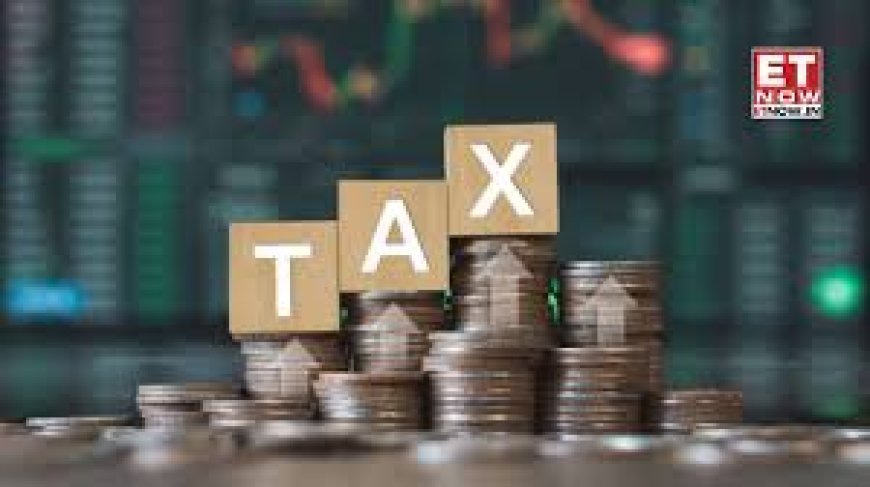Net direct tax collection slips 1.3% to Rs 5.6 trillion; refunds surge 38%
India’s net direct tax collection for Q1 FY26 drops by 1.3% to ₹5.6 trillion due to a 38% surge in refunds. Analysts remain cautiously optimistic about fiscal trends.

New Delhi, July 12, 2025 — India’s net direct tax collection for the first quarter of FY26 has recorded a marginal decline of 1.3% year-on-year, standing at ₹5.6 trillion, as per data released by the Central Board of Direct Taxes (CBDT). The dip in net collections is primarily attributed to a 38% surge in tax refunds, which have crossed ₹1.48 trillion so far this fiscal year.
Refunds Weigh Down Net Collections
Gross direct tax collections, including both corporate and personal income tax, rose by 4.2% to ₹7.08 trillion during April–June 2025. However, the higher-than-expected outflow in refunds trimmed the net figure. Refunds issued up to July 10, 2025, were significantly higher compared to ₹1.07 trillion disbursed in the corresponding period last year.
“The refund growth reflects improved processing speed and commitment to timely disbursement,” said a senior CBDT official, highlighting that faster refund cycles are a result of enhanced automation and data reconciliation mechanisms in the Income Tax Department.
Breakdown of Tax Categories
Corporate tax accounted for a substantial share of the collection, contributing ₹2.83 trillion in net terms, while personal income tax (including Securities Transaction Tax) stood at ₹2.77 trillion. Advance tax collections also rose 4% year-on-year, reaching ₹1.47 trillion, indicating moderate growth in expected income flows among corporates and high net-worth individuals.
Despite the slowdown in net inflow, the gross figures signal a generally positive underlying trend in economic activity, albeit with softer momentum than anticipated.
Analyst Perspective: Neutral to Slightly Cautious
Market analysts have offered a balanced view on the data. While the dip in net tax revenue may seem concerning on the surface, the broader picture remains intact.
“The fact that gross collections have grown despite global macro uncertainties is a testament to India’s resilient economic fundamentals. However, the sizable jump in refunds indicates the need for caution in fiscal assumptions,” said Radhika Rao, Senior Economist at DBS Bank India.
Echoing a similar sentiment, Suvodeep Rakshit, Chief Economist at Kotak Institutional Equities, said, “Refund outflows are a function of prior over-collections and better compliance. It’s not a demand-side issue. But the fiscal math will need to be closely watched, especially with potential revenue pressure in the second half of FY26.”
Fiscal Implications and Government's Stance
Finance Ministry officials maintain that the direct tax collection trajectory remains broadly in line with the Budget 2025–26 estimates, which target a 12.5% growth in net direct taxes. “The refund-adjusted figures are always front-loaded in the first quarter due to year-end filings and assessments. We expect recovery in the second half,” a ministry source said.
The government is also banking on Goods and Services Tax (GST) buoyancy and continued momentum in compliance to meet fiscal deficit targets. The Centre has projected a fiscal deficit of 5.1% of GDP for FY26, with direct taxes expected to be a major pillar of revenue support.
Stock Market Response and Investor Outlook
Equity markets reacted with measured optimism. The Nifty 50 closed flat at 25,610, while the BSE Sensex gained 102 points amid expectations that tax refunds would boost consumption and liquidity in the near term.
“While lower net tax revenue may raise fiscal prudence concerns, higher refunds should help support retail demand, especially during the festive season in Q2 and Q3,” said Ajit Mishra, VP – Research, Religare Broking.
The bond market, however, remained watchful. The benchmark 10-year G-sec yield inched up 3 basis points to 7.08% over concerns that a revenue shortfall, if it persists, could compel higher borrowings later in the fiscal.
Looking Ahead: Key Triggers
Experts point out that the upcoming advance tax installment in September and corporate performance in Q2FY26 will be critical indicators of whether the government’s revenue goals are achievable.
Furthermore, the performance of sectors such as banking, IT, and manufacturing — major contributors to corporate tax — will determine the pace of tax accruals in the coming quarters.
“The underlying trend suggests India’s tax base continues to deepen. But FY26 will be a year where efficiency of collection, compliance, and timely refund processing will shape both fiscal and macroeconomic narratives,” said Arvind Chari, CIO, Quantum Advisors.
What's Your Reaction?
 Like
0
Like
0
 Dislike
0
Dislike
0
 Love
0
Love
0
 Funny
0
Funny
0
 Angry
0
Angry
0
 Sad
0
Sad
0
 Wow
0
Wow
0












































































